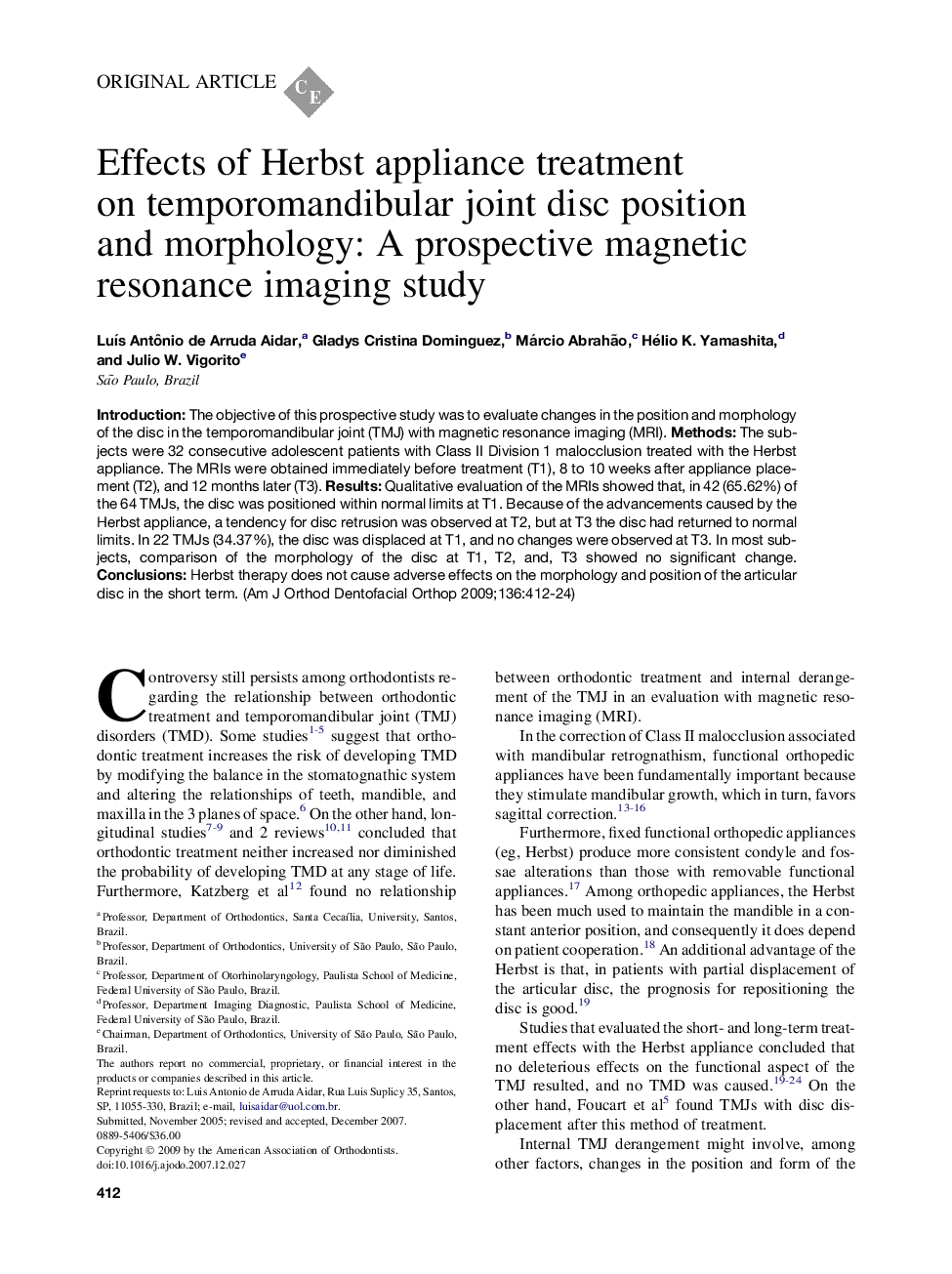| Article ID | Journal | Published Year | Pages | File Type |
|---|---|---|---|---|
| 3118688 | American Journal of Orthodontics and Dentofacial Orthopedics | 2009 | 13 Pages |
IntroductionThe objective of this prospective study was to evaluate changes in the position and morphology of the disc in the temporomandibular joint (TMJ) with magnetic resonance imaging (MRI).MethodsThe subjects were 32 consecutive adolescent patients with Class II Division 1 malocclusion treated with the Herbst appliance. The MRIs were obtained immediately before treatment (T1), 8 to 10 weeks after appliance placement (T2), and 12 months later (T3).ResultsQualitative evaluation of the MRIs showed that, in 42 (65.62%) of the 64 TMJs, the disc was positioned within normal limits at T1. Because of the advancements caused by the Herbst appliance, a tendency for disc retrusion was observed at T2, but at T3 the disc had returned to normal limits. In 22 TMJs (34.37%), the disc was displaced at T1, and no changes were observed at T3. In most subjects, comparison of the morphology of the disc at T1, T2, and, T3 showed no significant change.ConclusionsHerbst therapy does not cause adverse effects on the morphology and position of the articular disc in the short term.
